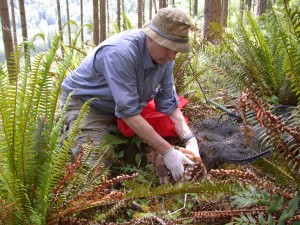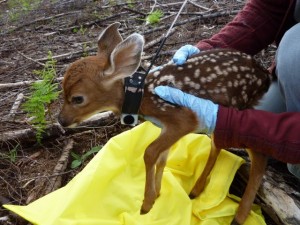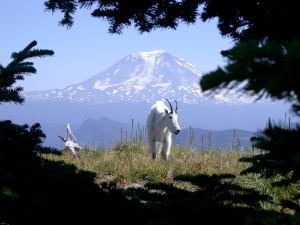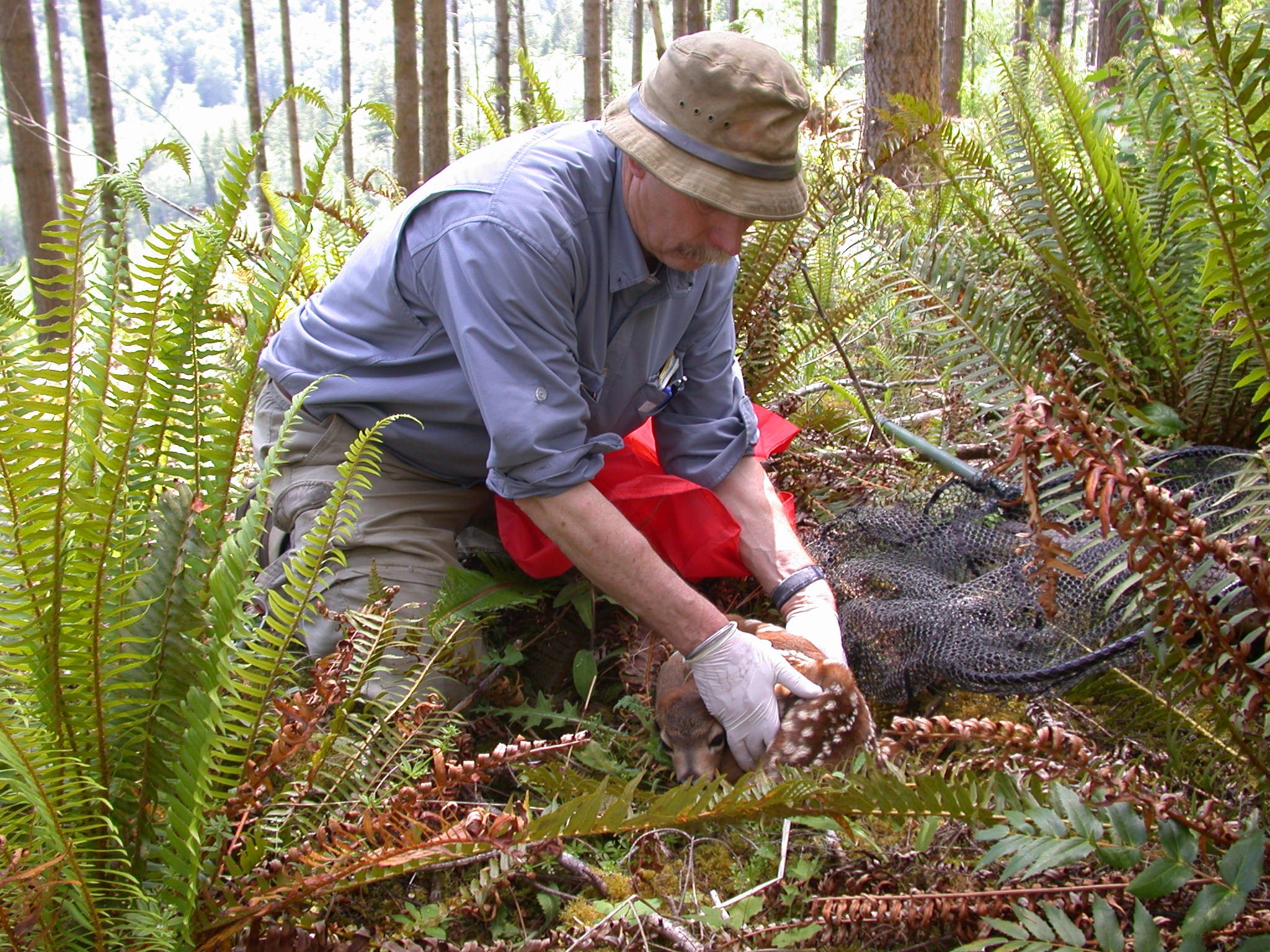By Doris Faltys
![]() “I have always been interested in science and liked wild things and wild places,” says Dr. Cliff Rice, research scientist for the Washington Department of Fish and Wildlife (WDFW).
“I have always been interested in science and liked wild things and wild places,” says Dr. Cliff Rice, research scientist for the Washington Department of Fish and Wildlife (WDFW).

Rice lived in India as a kid, taking many camping and hunting trips. “Before starting work on my PhD, I returned to the Indian subcontinent as a Peace Corps volunteer. I held a wildlife posting in Nepal as a resident natural scientist,” shares Rice, reflecting on his past.
Rice’s interest in wildlife research led him to work for the U.S. Army as an endangered species biologist. That career took him to the Northern Mariana Islands where his work involved feral goat inventory and eradication, as well as the monitoring of native species, including flying foxes.
When the time came to choose a permanent place to settle, Rice chose the Pacific Northwest, taking a job with WDFW. In 2002, he joined a WDFW research project on mountain goats.
Preliminary surveys estimated that in the previous 40 years, the goat population declined in Western Washington’s Cascade Mountains by as much as one third. The project’s goal was to understand the reason for this decline. “Could this observed decline be attributed to harvest? What is a sustainable harvest rate for mountain goats? What are the average rates of reproduction and survival? It is possible to reverse this decline?” were all questions that the study posed. Aerial surveys of the goats were conducted. Eighty goats were captured and fitted with GPS tracking collars.
 “What we found was that too many goats were taken,” Rice says. “Goats cannot be managed in the same way as deer. Goats are older before they reach the age of maturity. Their reproductive rate does not increase during years with improved habitat. Populations do not bounce back easily. Too many hunting licenses were issued – too many goats were shot.”
“What we found was that too many goats were taken,” Rice says. “Goats cannot be managed in the same way as deer. Goats are older before they reach the age of maturity. Their reproductive rate does not increase during years with improved habitat. Populations do not bounce back easily. Too many hunting licenses were issued – too many goats were shot.”
“Today, permit levels are down. Also, there has been over population in the Olympic Mountains, where goats are not native, and they have had a negative impact on the native plants. The National Park Service is considering plans for trans-locating mountain goats from the Olympics to the Cascades,” Rice adds.
Currently, Rice is part of a WDFW project researching black-tailed deer in Western Washington. “Our department manages wildlife resources for the public use and enjoyment. The black- tailed deer are a very good draw for hunters. We do not want the deer to be depleted or overpopulated. A lot of black- tailed deer live on land slated for logging, including state and private forest land,” explains Rice.
“Herbicide is being used on forested land to target non-coniferous plants: broad leaf natives, such as berries, and grasses. This will enhance the environment for reforestation and the newly planted conifer seedlings. In our research herbicide is being tested in eight testing areas, some DNR, some commercial, to determine if the herbicide has a negative effect on black-tailed deer populations,” he continues.
 “The issue for the black-tailed deer is a habitat issue. How will the length of time it takes for re-growth of food sources after the herbicide is sprayed affect the black-tailed deer? This study started in 2010 and will last until 2016. Fifty does have been caught and fitted with GPS collars. We are tracking where the does live, whether herbicide was used, how many fawns are born, and how long the fawns survive,” summarizes Rice when discussing the study.
“The issue for the black-tailed deer is a habitat issue. How will the length of time it takes for re-growth of food sources after the herbicide is sprayed affect the black-tailed deer? This study started in 2010 and will last until 2016. Fifty does have been caught and fitted with GPS collars. We are tracking where the does live, whether herbicide was used, how many fawns are born, and how long the fawns survive,” summarizes Rice when discussing the study.
The fawns have an instrument attached to their collars, an accelerometer, that senses movement. Their collars will last for two years. Most of the collaring is done by district biologists.
As Rice continues to explore the many remote regions of our state, he will be tracking deer while also enjoying the beauty of hiking in Washington State.
More information regarding the mountain goat research project can be found here. Special thanks to Dr. Cliff Rice, for sharing the photos.



















































